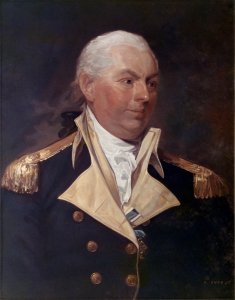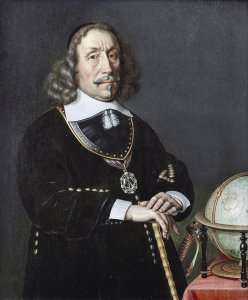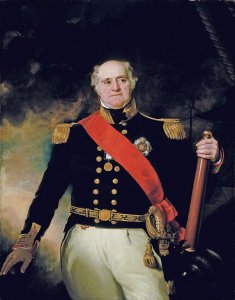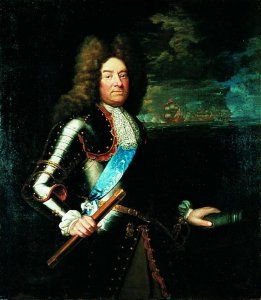Today in Naval History - Naval / Maritime Events in History
23rd of March
please use the following link and you will find the details and all events of this day .....
1745 – Launch of HMS Gloucester, a 50-gun fourth rate ship of the line built for the Royal Navy in the 1740s
HMS Gloucester was a 50-gun fourth rate ship of the line built for the Royal Navy in the 1740s. She participated in the 1740–48 War of the Austrian Succession, capturing four French privateers. The ship was broken up in 1764.

1762 – Launch of HMS Kent, a 74-gun third rate ship of the line of the Royal Navy, at Deptford Dockyard.
HMS Kent was a 74-gun third rate ship of the line of the Royal Navy, launched on 23 March 1762 at Deptford Dockyard.
In 1774, a chest containing perhaps as much as 400 lb (181.4 kg) of gunpowder exploded during saluting, killing eleven and injuring dozens more, and causing the marine drummer sitting on the chest to be blown overboard. The marine reportedly suffered no injuries as a result.
She was sold out of the service in 1784.


ventilator (ZAZ6814) of 'Defence' (sistership)
1780 – Launch of HMS Fortitude, a 74-gun third-rate ship of the line of the Royal Navy, built by John Randall & Co., at Rotherhithe.

1794 – Launch of French HMS Donegal, launched as Barra, a Téméraire class 74-gun ship of the line of the French Navy.
She was renamed Pégase in October 1795, and Hoche in December 1797. The British Royal Navy captured her on 12 October 1798 and recommissioned her as HMS Donegal.
HMS Donegal was launched in 1794 as Barra, a Téméraire class 74-gun ship of the line of the French Navy. She was renamed Pégase in October 1795, and Hoche in December 1797. The British Royal Navy captured her on 12 October 1798 and recommissioned her as HMS Donegal.

'Duckworth's Action off San Domingo, 6 February 1806' by Nicholas Pocock. HMS Donegal is on the left of the painting, engaging the Jupiter

HMS Donegal (PAH0760)
1796 – Launch of French Loire, a 44-gun frigate of the French Navy.
Loire was a 44-gun frigate of the French Navy. She was captured following the Battle of Tory Island by a Royal Navy frigate squadron and subsequently taken into British service as HMS Loire.

Capture of Loire
1815 - USS Hornet captures HMS Penguin
HMS Penguin was a Royal Navy Cruizer-class brig-sloop launched in 1813. In 1815 USS Hornet captured Penguin in a battle that took place after the end of the War of 1812. Hornet then scuttled Penguin as she was too damaged to merit keeping.

The action between USS Hornet and HMS Penguin
1848 – The ship John Wickliffe arrives at Port Chalmers carrying the first Scottish settlers for Dunedin, New Zealand. Otago province is founded.
John Wickliffe was the first ship to arrive carrying Scottish settlers, including Otago settlement founder Captain William Cargill, in the city of Dunedin, New Zealand. The ship was named after a reformer, John Wycliffe.
Departing with 97 passengers from Gravesend, near London, on 22 November 1847, and from Portsmouth on 14 December 1847, she arrived at Port Chalmers on 23 March 1848. 23 March is now observed as Otago Anniversary Day, although the anniversary actually celebrates the establishment of the Otago provincial government on the same day in 1852. Her sister ship, Philip Laing, arrived three weeks later on 15 April.

Complete passenger list of the John Wickcliffe
1853 – Launch of HMS St Jean d'Acre, the Royal Navy's first 101 gun screw two-decker line-of-battle ship.

HMS St Jean d'Acre
1902 – Launch of Adolphe, a sailing ship that was wrecked at the mouth of the Hunter River in New South Wales, Australia, in 1904
The Adolphe was a sailing ship that was wrecked at the mouth of the Hunter River in New South Wales, Australia, in 1904. The ship is now the most prominent of several wrecks on what is now the Stockton breakwall, which protects Newcastle harbour. The rescue of the ship’s crew has gone down in local maritime history as one of the most remarkable in local waters.


The wreck of the Adolphe on Stockton breakwall
1906 – Launch of SMS Scharnhorst ("His Majesty's Ship Scharnhorst"), an armored cruiser of the Imperial German Navy, built at the Blohm & Voss shipyard in Hamburg, Germany.
SMS Scharnhorst ("His Majesty's Ship Scharnhorst")[a] was an armored cruiser of the Imperial German Navy, built at the Blohm & Voss shipyard in Hamburg, Germany. She was the lead ship of her class, which included SMS Gneisenau. Scharnhorst and her sister were enlarged versions of the preceding Roon class; they were equipped with a greater number of main guns and were capable of a higher top speed. The ship was named after the Prussian military reformer General Gerhard von Scharnhorst and commissioned into service on 24 October 1907.

1911 - The passenger ship SS Yongala sank off Cape Bowling Green, Queensland, Australia - All 122 aboard were lost,
The passenger ship SS Yongala sank off Cape Bowling Green, Queensland, Australia on 23 March 1911. En route from Melbourneto Cairns she steamed into a cyclone and sank south of Townsville. All 122 aboard were lost, and traces of the ship were not found until days later, when cargo and wreckage began to wash ashore at Cape Bowling Green and at Cleveland Bay. It was believed that the hull of the ship had been ripped open by a submerged rock. The wreck, which has become a tourist attraction and dive site, was not found until 1958.

Postcard of SS Yongala from c. 1905
1921 – Launch of STS Sedov (Russian: Седов), formerly Magdalene Vinnen II (1921–1936) and Kommodore Johnsen (–1948), a four-masted steel barque that for almost 80 years was the largest traditional sailing ship in operation.
STS Sedov (Russian: Седов), formerly Magdalene Vinnen II (1921–1936) and Kommodore Johnsen (–1948), is a four-masted steel barque that for almost 80 years was the largest traditional sailing ship in operation. Originally built as a German cargo ship, Sedov is today a sail training vessel, training cadets from the universities of Murmansk, Saint Petersburg and Arkhangelsk. She participates regularly in the big maritime international events as a privileged host and has also been a regular participant in The Tall Ships' Races.

23rd of March
please use the following link and you will find the details and all events of this day .....
Naval/Maritime History - 27th of August - Today in Naval History - Naval / Maritime Events in History
Today in Naval History - Naval / Maritime Events in History 21 March 1901 – Launch of HMS Duncan, the lead ship of the six-ship Duncan class of Royal Navy pre-dreadnought battleships. HMS Duncan was the lead ship of the six-ship Duncan class of Royal Navy pre-dreadnought battleships. Built to...
shipsofscale.com
1745 – Launch of HMS Gloucester, a 50-gun fourth rate ship of the line built for the Royal Navy in the 1740s
HMS Gloucester was a 50-gun fourth rate ship of the line built for the Royal Navy in the 1740s. She participated in the 1740–48 War of the Austrian Succession, capturing four French privateers. The ship was broken up in 1764.
1762 – Launch of HMS Kent, a 74-gun third rate ship of the line of the Royal Navy, at Deptford Dockyard.
HMS Kent was a 74-gun third rate ship of the line of the Royal Navy, launched on 23 March 1762 at Deptford Dockyard.
In 1774, a chest containing perhaps as much as 400 lb (181.4 kg) of gunpowder exploded during saluting, killing eleven and injuring dozens more, and causing the marine drummer sitting on the chest to be blown overboard. The marine reportedly suffered no injuries as a result.
She was sold out of the service in 1784.
ventilator (ZAZ6814) of 'Defence' (sistership)
1780 – Launch of HMS Fortitude, a 74-gun third-rate ship of the line of the Royal Navy, built by John Randall & Co., at Rotherhithe.
1794 – Launch of French HMS Donegal, launched as Barra, a Téméraire class 74-gun ship of the line of the French Navy.
She was renamed Pégase in October 1795, and Hoche in December 1797. The British Royal Navy captured her on 12 October 1798 and recommissioned her as HMS Donegal.
HMS Donegal was launched in 1794 as Barra, a Téméraire class 74-gun ship of the line of the French Navy. She was renamed Pégase in October 1795, and Hoche in December 1797. The British Royal Navy captured her on 12 October 1798 and recommissioned her as HMS Donegal.
'Duckworth's Action off San Domingo, 6 February 1806' by Nicholas Pocock. HMS Donegal is on the left of the painting, engaging the Jupiter
HMS Donegal (PAH0760)
1796 – Launch of French Loire, a 44-gun frigate of the French Navy.
Loire was a 44-gun frigate of the French Navy. She was captured following the Battle of Tory Island by a Royal Navy frigate squadron and subsequently taken into British service as HMS Loire.
Capture of Loire
1815 - USS Hornet captures HMS Penguin
HMS Penguin was a Royal Navy Cruizer-class brig-sloop launched in 1813. In 1815 USS Hornet captured Penguin in a battle that took place after the end of the War of 1812. Hornet then scuttled Penguin as she was too damaged to merit keeping.
The action between USS Hornet and HMS Penguin
1848 – The ship John Wickliffe arrives at Port Chalmers carrying the first Scottish settlers for Dunedin, New Zealand. Otago province is founded.
John Wickliffe was the first ship to arrive carrying Scottish settlers, including Otago settlement founder Captain William Cargill, in the city of Dunedin, New Zealand. The ship was named after a reformer, John Wycliffe.
Departing with 97 passengers from Gravesend, near London, on 22 November 1847, and from Portsmouth on 14 December 1847, she arrived at Port Chalmers on 23 March 1848. 23 March is now observed as Otago Anniversary Day, although the anniversary actually celebrates the establishment of the Otago provincial government on the same day in 1852. Her sister ship, Philip Laing, arrived three weeks later on 15 April.
Complete passenger list of the John Wickcliffe
1853 – Launch of HMS St Jean d'Acre, the Royal Navy's first 101 gun screw two-decker line-of-battle ship.
HMS St Jean d'Acre
1902 – Launch of Adolphe, a sailing ship that was wrecked at the mouth of the Hunter River in New South Wales, Australia, in 1904
The Adolphe was a sailing ship that was wrecked at the mouth of the Hunter River in New South Wales, Australia, in 1904. The ship is now the most prominent of several wrecks on what is now the Stockton breakwall, which protects Newcastle harbour. The rescue of the ship’s crew has gone down in local maritime history as one of the most remarkable in local waters.
The wreck of the Adolphe on Stockton breakwall
1906 – Launch of SMS Scharnhorst ("His Majesty's Ship Scharnhorst"), an armored cruiser of the Imperial German Navy, built at the Blohm & Voss shipyard in Hamburg, Germany.
SMS Scharnhorst ("His Majesty's Ship Scharnhorst")[a] was an armored cruiser of the Imperial German Navy, built at the Blohm & Voss shipyard in Hamburg, Germany. She was the lead ship of her class, which included SMS Gneisenau. Scharnhorst and her sister were enlarged versions of the preceding Roon class; they were equipped with a greater number of main guns and were capable of a higher top speed. The ship was named after the Prussian military reformer General Gerhard von Scharnhorst and commissioned into service on 24 October 1907.
1911 - The passenger ship SS Yongala sank off Cape Bowling Green, Queensland, Australia - All 122 aboard were lost,
The passenger ship SS Yongala sank off Cape Bowling Green, Queensland, Australia on 23 March 1911. En route from Melbourneto Cairns she steamed into a cyclone and sank south of Townsville. All 122 aboard were lost, and traces of the ship were not found until days later, when cargo and wreckage began to wash ashore at Cape Bowling Green and at Cleveland Bay. It was believed that the hull of the ship had been ripped open by a submerged rock. The wreck, which has become a tourist attraction and dive site, was not found until 1958.
Postcard of SS Yongala from c. 1905
1921 – Launch of STS Sedov (Russian: Седов), formerly Magdalene Vinnen II (1921–1936) and Kommodore Johnsen (–1948), a four-masted steel barque that for almost 80 years was the largest traditional sailing ship in operation.
STS Sedov (Russian: Седов), formerly Magdalene Vinnen II (1921–1936) and Kommodore Johnsen (–1948), is a four-masted steel barque that for almost 80 years was the largest traditional sailing ship in operation. Originally built as a German cargo ship, Sedov is today a sail training vessel, training cadets from the universities of Murmansk, Saint Petersburg and Arkhangelsk. She participates regularly in the big maritime international events as a privileged host and has also been a regular participant in The Tall Ships' Races.




 Shipbuilding Company
Shipbuilding Company



